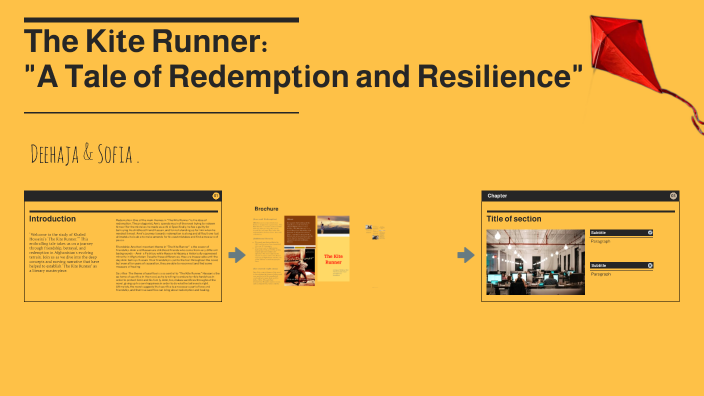Analyzing The Kite Runner's Dilemma Within The Nigerian Context

Table of Contents
Parallels in Societal Class Structures and Inequality
The Kite Runner vividly portrays the stark class disparities between Amir, a privileged Pashtun boy, and Hassan, his Hazara servant. This relationship mirrors the deep socioeconomic stratification prevalent in Nigeria. The vast gap between the wealthy elite and the marginalized in Nigeria is mirrored in the power dynamics between Amir and Hassan, highlighting how societal structures often perpetuate inequality and discrimination.
- Examples of class-based discrimination in Nigerian society: Access to quality education, healthcare, and justice is often determined by socioeconomic status, creating a cycle of poverty and disadvantage for many Nigerians. The wealth gap significantly impacts social mobility, reinforcing existing inequalities.
- Comparison of power dynamics: Both Afghanistan and Nigeria have witnessed periods of political instability and corruption, which further exacerbate class divisions. The powerful elite often exploit their position to maintain their dominance, leaving the marginalized with little recourse.
- Impact of corruption and inequality on social mobility: Rampant corruption diverts resources away from essential services for the poor, hindering social mobility and perpetuating a cycle of poverty. This creates a societal structure where upward mobility is significantly limited for those born into disadvantaged circumstances, much like the limitations faced by Hassan in The Kite Runner. This resonates with the realities of Nigerian social stratification.
Exploring Themes of Betrayal and Redemption within a Nigerian Framework
Amir's betrayal of Hassan forms the emotional core of The Kite Runner. This act of cowardice and the subsequent years of guilt and self-reproach resonate with experiences of betrayal and broken trust frequently encountered within Nigerian society.
- Examples of betrayal in Nigerian society: Betrayal can manifest in various forms – political corruption, familial disputes, broken promises, and betrayals of trust within social networks. The impact of these betrayals can be devastating, leading to lasting emotional scars and damaged relationships, much like the impact on Amir and Hassan's relationship.
- Redemption within Nigerian cultural and religious contexts: The concept of redemption is central to many Nigerian religions and cultural beliefs. The possibility of forgiveness and reconciliation is deeply ingrained in Nigerian society, mirroring Amir's journey towards atonement.
- Process of forgiveness and reconciliation: Both The Kite Runner and various Nigerian narratives explore the challenging process of forgiveness and reconciliation. The path to redemption is often fraught with obstacles and requires significant self-reflection and a willingness to confront past mistakes. Understanding these processes within a Nigerian framework enriches our understanding of the themes present in Hosseini's novel.
The Impact of Trauma and its Manifestations in Both Cultures
The trauma inflicted upon Amir and Hassan profoundly shapes their lives. This resonates deeply with the experiences of trauma and displacement within Nigeria's history, marked by civil war, religious conflicts, and ongoing socio-political instability.
- Types of trauma experienced in Nigeria: Nigerians have endured significant trauma stemming from armed conflicts, ethnic and religious violence, poverty, displacement, and political oppression. These experiences leave lasting psychological scars on individuals and communities.
- PTSD and its manifestation: Post-traumatic stress disorder (PTSD) is a prevalent consequence of trauma in both Afghan and Nigerian contexts. Understanding its manifestation in these vastly different cultural settings requires sensitivity and nuance.
- Coping mechanisms and healing processes: Different cultures employ diverse coping mechanisms and healing processes to address trauma. Exploring these variations between Afghan and Nigerian societies provides insights into how individuals and communities grapple with adversity. Comparing these methods illuminates how universally applicable certain healing approaches are.
Adaptation and Interpretation: The Kite Runner's Narrative in a Nigerian Setting
Adapting The Kite Runner's themes to a Nigerian context presents both challenges and opportunities for exploring cultural nuances and specific societal issues.
- Potential challenges and opportunities: Adapting the story requires careful consideration of cultural sensitivities and the avoidance of stereotypical portrayals. The opportunity lies in creating a compelling narrative that reflects the realities of Nigerian society while retaining the emotional power of the original work.
- Altering or retaining key plot points and themes: Certain plot elements might require adaptation to reflect Nigerian societal norms and cultural contexts. However, the core themes of betrayal, redemption, and social inequality can be successfully transposed and explored.
- Potential impact on Nigerian audiences: A well-executed adaptation could spark crucial conversations on important social issues within Nigerian society, potentially leading to greater understanding and empathy.
Conclusion
Analyzing The Kite Runner's dilemmas within the Nigerian context reveals striking parallels in the struggles with class inequality, betrayal, and the enduring impact of trauma. The universality of these themes emphasizes the shared human experience across vastly different cultural settings. Further analyzing the Kite Runner's themes within the Nigerian context is crucial for understanding the complexities of both societies and fostering cross-cultural dialogue. Let's continue the discussion on the relevance of The Kite Runner’s dilemmas in a Nigerian context and explore the potential for meaningful adaptations that resonate with Nigerian audiences. This comparative analysis enriches our understanding of global literature and the shared societal challenges we face.

Featured Posts
-
 Sandylands U Episode Guide And Tv Listings
May 20, 2025
Sandylands U Episode Guide And Tv Listings
May 20, 2025 -
 Michael Schumacher Grand Pere Pour La Premiere Fois D Une Petite Fille
May 20, 2025
Michael Schumacher Grand Pere Pour La Premiere Fois D Une Petite Fille
May 20, 2025 -
 Pro D2 Valence Romans Su Agen Et La Course Au Maintien Calendrier Et Enjeux
May 20, 2025
Pro D2 Valence Romans Su Agen Et La Course Au Maintien Calendrier Et Enjeux
May 20, 2025 -
 Strong Earnings Results Lead To Higher Vodacom Vod Payout
May 20, 2025
Strong Earnings Results Lead To Higher Vodacom Vod Payout
May 20, 2025 -
 Guide Des Nouveaux Restaurants De Biarritz Chefs Et Adresses 2024
May 20, 2025
Guide Des Nouveaux Restaurants De Biarritz Chefs Et Adresses 2024
May 20, 2025
